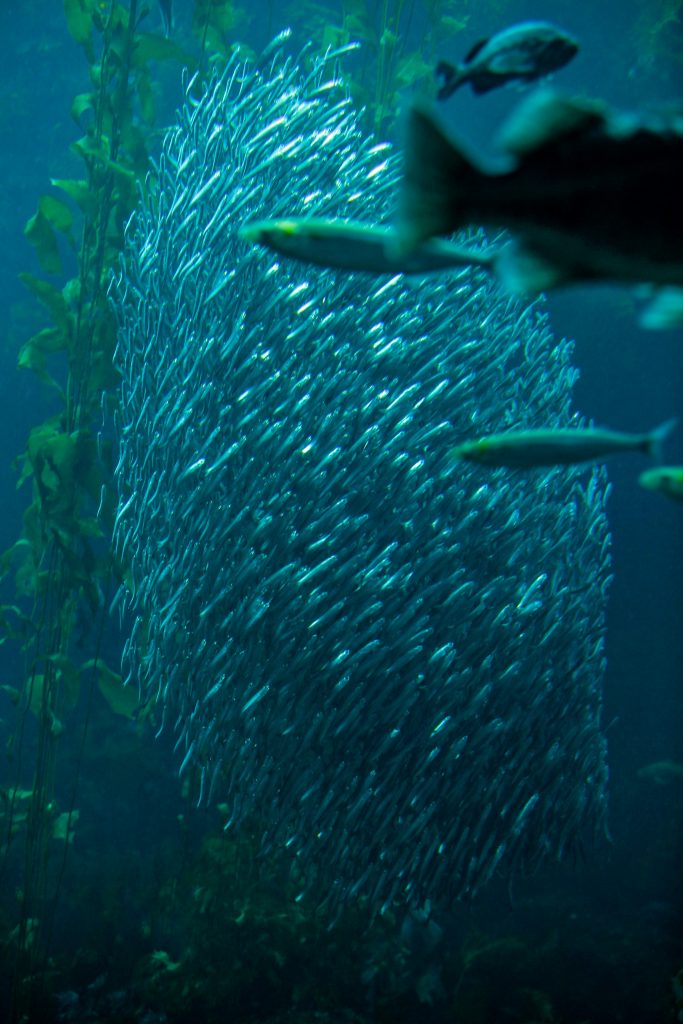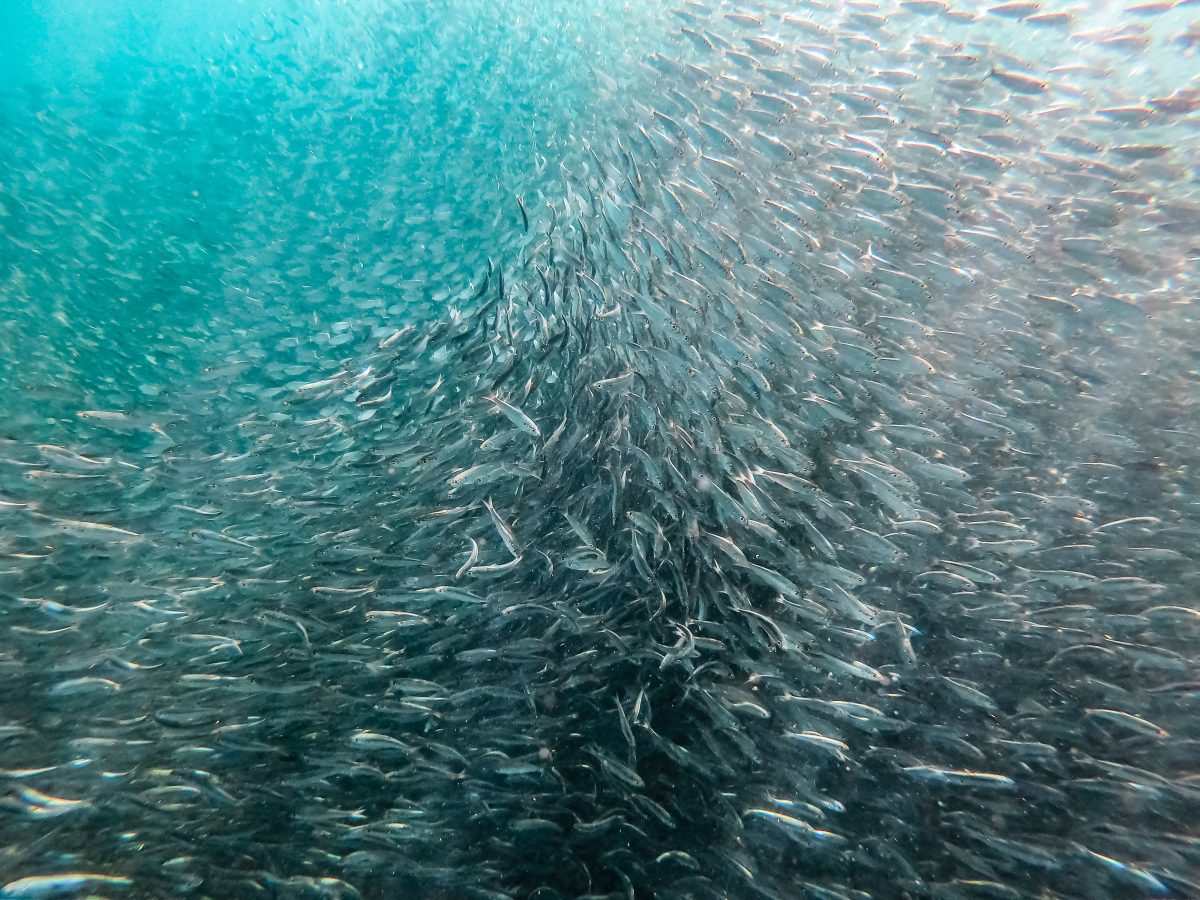Group Mindset & Movement in Marine Species & Other Animals
Murmuration is the term used to describe the fascinating phenomenon of very large groups of birds, fishes or insects moving together, including changing direction together. The name murmuration comes from the murmur-like sound made by the birds as they move in unison. In Danish, murmuration is known as “black sun,” as the huge groups of congregating individuals can obscure the light. Murmuration seems roughly synonymous with flock, school, and shoal, except that murmuration is more about what the agglomerations of birds and fishes do, and, as it turns out, there is more to it than meets the eye.
What We Know About Murmuration
In the 1950s, scientists truly began understanding the collective behaviors of species that participated in murmurations. According to a 2015 study, the collective behavior is largely attributed to “the rapid transmission of local behavioral response to neighbors,” which in other words means that individuals in the species are highly attuned to the movement of those around them, the result being a self-organized group. Researchers acknowledge they still have much to learn,nevertheless, here are some of their fascinating speculations.
1. Murmurations rely on a form of collective intelligence in which each bird and fish shares their unique knowledge. This process, perhaps, is similar to what is described in the famous book The Wisdom of Crowds by James Surowiecki. The book’s main idea is that the thoughts and decisions of large groups of diverse people, each thinking independently, can often be superior to the thinking of lone individuals, even if those individuals are experts.
- While each individual is important, they appear to operate in groups of about seven members or more. There is no one leader, either of each small group or of the thousands of members of a single murmuration. This collective intelligence is thought to function in a very wide range of organisms, all the way down to bacteria.
Certain Shade-Seeking Shoals Can Only Do So Collectively
Dr. Iaian Couzin at Princeton University is an expert in murmuration. His lab has specifically studied a shoal of shiners, a small fish species that moves collectively in order to find shade. Dr. Couzin’s research has found that the shoal is incredibly adept at finding shade patches while moving as a group, yet, if individual fishes are placed in a tank, they do not know how to behave. This suggests that the swarm results in a collective behavior that is unique to the group.

Murmurating Marine Robots
Just as there is collective intelligence in animals there is also collective artificial intelligence in robots. Scientists are working on robot swarms and various swarm technologies have become available commercially. One example, Apium Swarm Robotics, uses a variety of technologies to allow a system of marine robots to communicate with each other in the water, making them useful for hydrographic surveying, data collection, and a host of other applications.
In a different exciting example of robot swarms related to aquatic environments; researchers are hoping to use swarms of biodegradable robots to reduce the plastic pollution that increasingly clogs bodies of water worldwide. [Modelled after the biomechanics of water boatman insects and basking sharks, these robots use the water boatman’s rowing motion (thus, the new name “row-bots” ) and open their “mouths,” like herbivorous basking sharks, to gobble up the plastic debris.
The Human Collective
Humans are not devoid of this type of behavior, either. If you have ever witnessed “pack mentality,” there are well-known social cues that can appear in group dynamics. A 2008 study suggests that only a few informed individuals are needed to guide a large group through collective behavior. The study observed large human crowds of 100-200 people in an arena and their ability to move towards unknown physical targets around the arena. A few individuals with knowledge of the targets were the only ones needed to inform the group to move collectively, providing interesting implications about leadership behavior and group consensus in humans.
I hope we, as humans, can learn from murmurations, to collectively move together and change direction towards a healthier and regenerated ocean and planet.
Curious About Murmurations in Action?
- Check out this video by Earth Rangers on various schools of fish.
- Watch a stunning performance by a murmuration of starlings hunted by a Peregrin falcon.
